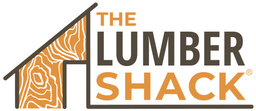The pressure of picking the perfect slab for your project can be difficult, even frustrating at times, but we are here to help alleviate those frustrations! While reading through your slab description, it’s possible that you’ll find a description that you’re unsure of. We’ve broken down some of the wood shop lingo below so you know a bit more about your slab!
List of Common Wood Defects
Rot or Punky/Soft Wood
If your slab is described as soft or punky this refers to the condition of the wood. Punky means that the slab is very soft and light, with a very low density. Punky wood is the result of rot, which is defined by the decaying of wood. Does this mean the wood is useless? No! It just means that you may need to put additional work in depending on your use. We stabilize slabs by using coating soft areas with a clear epoxy to ensure a nice, clean finish and have had great luck with this method!

Wood Spalting
Spalting is defined as dead wood that has undergone a particular form of bacterial decay that often looks like black ink lines varying in thickness throughout the slab. This leads to one-of-a-kind character in various wood types!
These next characteristics are all things you want to consider when thinking “how flat is this slab?”. Taper, Planer Snipe, Bow, Cup, and Twist all determine how flat the wood really is and if you’d need to have the board flattened for your project!

Wood Tapering
If your slab is described with having a taper this simply means that the board has thickness that tappers lessens in one area. Often times these can be removed when you flatten your slab.

Planar Snipe on Wood
Planer snipe is when a the planer cuts a little bit deeper at the beginning or end of a long board.

Bow, Cup, and Twist
Almost every slab is listed with at least on of the above three descriptions. They can vary in severity, but can usually be fixed when you flatten the slab.
A cup is a warp across the width of the face of the wood in which the edges are higher or lower than the center of the wood.
Lastly, a twist is a distortion or warp in which the two ends do not lie on the same plane, in a twist formation.
Want to learn more about wood characteristics and defects? Check out this info packed resource!


